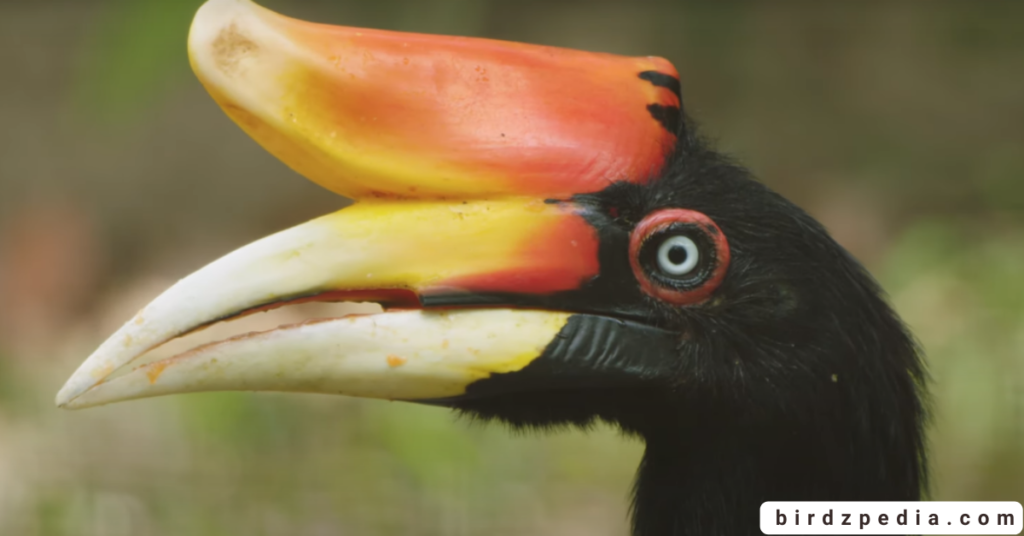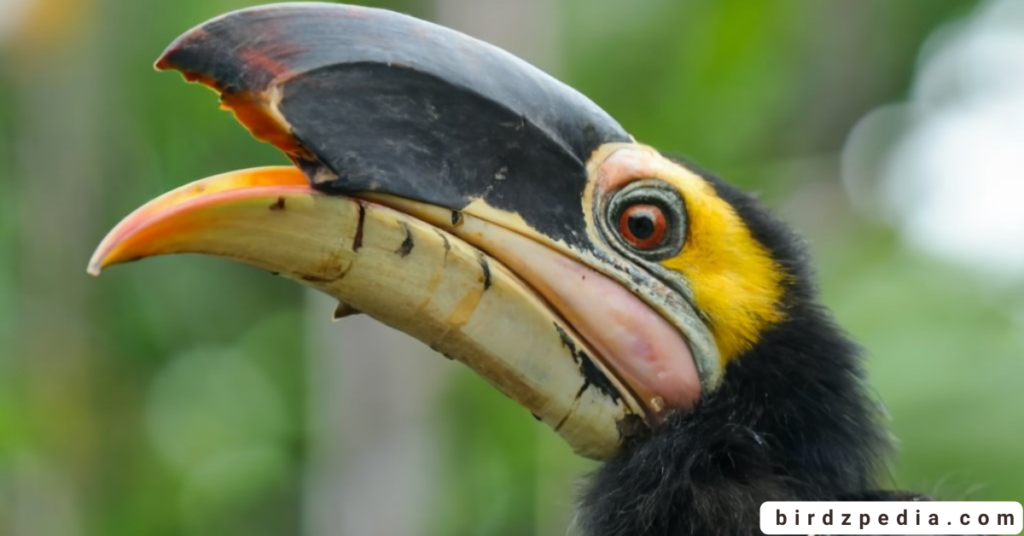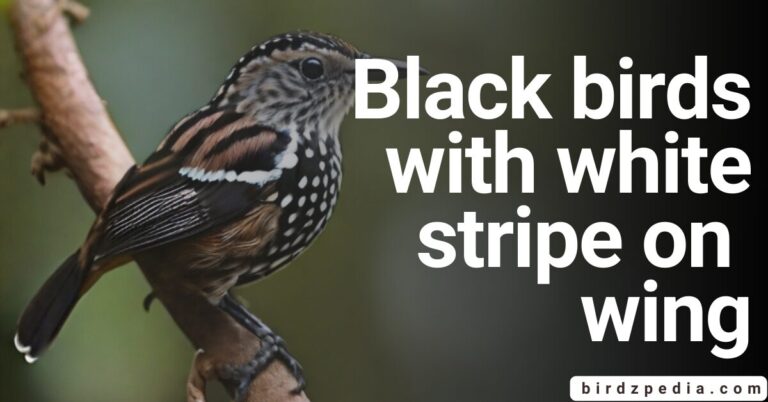Rhinoceros Hornbill [Buceros rhinoceros] Habitat, Diet, Characteristics,
Scientific Classification
| Kingdom | Phylum | Subphylum | Class | Order | Family | Genus | Species |
|---|---|---|---|---|---|---|---|
| Animalia | Chordata | Vertebrata | Aves | Bucerotiformes | Bucerotidae | Buceros | Buceros rhinoceros |
Rhinoceros Hornbill
Within the family Bucerotidae, the rhinoceros hornbill (Buceros rhinoceros) is a big species of forest hornbill. This amazing bird may live for up to 35 years in captivity, which is an amazing longevity. It is found in lowland and montane sections of its natural habitat. It thrives in tropical and subtropical temperatures,
especially in mountain rain forests that can reach elevations of 1,400 meters. The species is notable for its presence in a number of locations, including the Malay Peninsula, Borneo, Sumatra, Java, Singapore, and southern Thailand. Because of its importance, the Rhinoceros Hornbill is recognized as the national
bird of Malaysia as well as the state bird of Sarawak, a state in Malaysia. Within the Dayak community, particularly in the Ibanic clans, there is a particular place in cultural beliefs for this magnificent bird. It is considered the most important bird in the world or the highest bird in the world. The statue of the
rhinoceros hornbill is used in their traditional customs to greet Sengalang Burong, the god of omen-giving birds, during different feasts and festivities. It is important to remember that, unlike what some people may believe, the brahminy kite plays the role of their war deity, not the rhinoceros hornbill.
The cultural significance of the Buceros rhinoceros is further underscored by its depiction on the reverse side of the 5 Malaysian ringgit bill.

Summary
- Scientific Name: Buceros rhinoceros
- Lifespan: Can live up to 35 years in captivity.
- Habitat: Found in lowland and montane tropical/subtropical climates, including mountain rainforests up to 1,400 meters.
- Geographical Range: Native to Borneo, Sumatra, Java, the Malay Peninsula, Singapore, and southern Thailand.
- Cultural Significance: State bird of Sarawak, Malaysia, and the national bird of Malaysia.
- Cultural Beliefs: Revered among Dayak people, especially Ibanic groups, as the chief of worldly birds or the supreme worldly bird.
- Symbolism: Not associated with the war god; represented on the 5 Malaysian ringgit bill.
- Physical Feature: Prominent golden-yellow horn (casque) on the top of its beak.
- Conservation Status: Near Threatened (Population decreasing).
- Additional: Featured in the reverse of the 5 Malaysian ringgit bill.
- Description: Large forest hornbill with a golden-yellow horn (casque) on its beak.
- Diet and Feeding: Primarily eats fruits, especially figs. Also consumes bird eggs, bugs, small reptiles, and frogs. Uses its beak to pick up and throw food.
- Breeding: Breeds in pairs and sometimes observed in small parties while foraging. Breeding encouraged in captivity with simulated hollow tree trunks.
- Status and Conservation: Conservation Status: Near Threatened (Population decreasing). Found in lowland and montane tropical/subtropical climates. Threats include habitat loss and hunting. Cultural significance aids in awareness and conservation efforts.

Taxonomy
The famous Swedish naturalist Carl Linnaeus officially described the Buceros rhinoceros in his 1758 Systema Naturae, volume 10. Linnaeus places this bird in the same genus as the great hornbill, Buceros rhinoceros, and uses the generic name to refer to both species. Notably, Linnaeus lists China as the
species’ specific habitat. The name of the genus, which is derived from the Latin “becerus,” means “horned like an ox.” The Ancient Greek word “boukerōs,” which combines the words “bous” (meaning “ox”) and “kerōs” (meaning “horn”), is the source of this Latin term. The Latin source of the particular
epithet “rhinoceros” translates straight to “rhinoceros.” The detailed taxonomic description provided by Linnaeus continues to be a fundamental source of information regarding the classification and nomenclature of rhinoceros hornbills.
There are three recognized subspecies
| Subspecies | Scientific Name | Year | Geographic Range |
|---|---|---|---|
| B. r. borneoensis | Schlegel & Müller, S. | 1845 | Borneo |
| B. r. rhinoceros | Linnaeus | 1758 | South Malay Peninsula and Sumatra |
| B. r. silvestris | Vieillot | 1816 | Java |
Description
It is a large species of arboreal bird, growing to a length of 80 to 90 cm (31–35 in). Their weight demonstrates sexual dimorphism; males weigh between 2,465 and 2,960 g (87.0–104.4 oz), while females weigh between 2,040 and 2,330 g (72–82 oz). This hornbill has mostly black plumage,
which is contrasted with white legs and a vent, as well as a characteristic white tail with a black band. Particularly noteworthy are the enormous bill and casque, which are vivid orange and red in color. These colors are caused by preen oil that is applied from the preen gland above the tail.
The eyes of men are red with black borders, and the eyes of women are white with red borders.

Species in same Genus
| Species | Scientific Name |
|---|---|
| Great Hornbill | Buceros bicornis |
| Rufous Hornbill | Buceros hydrocorax |
| Knobbed Hornbill | Buceros cassidix |
| Black-casqued Hornbill | Buceros abyssinicus |
| Papuan Hornbill | Buceros plicatus |
Behaviour
Diet and Feeding
They eats a wide variety of foods, but its favorite is fruit. It has a strong preference for the wide variety of fruits found in its natural habitat. Apart from fruits, this sly bird exhibits a varied diet, actively pursuing and devouring insects, small reptiles, rodents, and any smaller birds it can capture. This
opportunistic feeding strategy demonstrates the bird’s capacity to modify its diet in response to changes in the availability of various prey items in its surroundings. Overall, they are an important ecological forager that uses a variety of opportunistic feeding strategies to maintain the ecosystem’s equilibrium.

Breeding
- Critical courtship and bonding; female relies on the male during incubation and chick-rearing.
- Nests inside tree trunks; female stays with eggs and chicks, while the male brings food.
- Post-egg laying, male collects mud; together, they seal the tree cavity entrance with mud, food, and feces.
- Small hole left for feeding and defecation; parents chip away mud once chicks are mature to let them leave the nest.
Threats
| Threats | Description |
|---|---|
| Habitat Loss | Deforestation and logging reduce suitable nesting and foraging habitats. |
| Illegal Wildlife Trade | Capture for the pet trade and the value of casques in traditional markets. |
| Climate Change | Alters environmental conditions, impacting food availability and nesting sites. |
| Hunting and Poaching | Targeted for their casques, feathers, and traditional medicinal use. |

Speed
Generally speaking, hornbills are not noted for their ability to fly quickly or continuously; instead, they are better suited to flying nimbly within the boundaries of their woodland environments. Rather than traveling great distances at rapid speeds, their flight is frequently characterized by brief sprints and glides.
Lifespan
Although the Buceros rhinoceros has a variable lifespan, it has been documented that they can survive up to 35 years in captivity. Their longevity in the wild may be impacted by environmental factors, diseases, and predators. These estimations are based on general observations and data from captive populations; individual variances in lifetime are possible, as in the case of many animals.

Common Names in Different Languages
| Language | Common Name |
|---|---|
| English | Rhinoceros Hornbill |
| Malay | Kenyalang Gading |
| Indonesian | Rangkong Badak |
| Thai | Nok Rang Khong (นกแร้งคง) |
| Filipino | Tarictic |
| Vietnamese | Chim Nô lệ |
FAQs
- Is the Buceros rhinoceros a threatened species?
- Indeed, they are categorized as “Near Threatened” on the conservation status scale because to threats to its populations, including habitat degradation and poaching.
- Where is the natural habitat of the Buceros rhinoceros?
- Originating in Borneo, Sumatra, Java, the Malay Peninsula, Singapore, and southern Thailand, they are a native of these regions.
- What is the significance of the casque on their bill?
- The casque is a keratin-filled, hollow structure. Its precise job is unknown, however it is thought to be involved in courting displays, communication, and call amplification.
- How long can they live in captivity?
- They have been observed to live up to 35 years in captivity.
- What is the role of the male and female during nesting and chick-rearing?
- While the male gathers food and delivers it to the nesting female and chicks, the female remains inside the tree trunk nest with the eggs and chicks.
- Why is the Buceros rhinoceros considered the state bird of Sarawak and the national bird of Malaysia?
- The reverse of the 5 Malaysian ringgit bill features an image of it, which has cultural importance, particularly among the Dayak people.
- What threats does they face in the wild?
- Threats include hunting for different body parts, illegal wildlife trading for casques, and habitat degradation from deforestation.
- How does they contribute to its ecosystem?
- Being an omnivorous species, it is essential to the spread of seeds, which promotes forest regeneration.
- Do they migrate?
- They are typically non-migratory birds that want to remain in their woodland environments.
- Are there conservation efforts in place for the Buceros rhinoceros?
- Indeed, a number of groups and conservationists are trying to save the species; they are concentrating on community awareness campaigns, anti-poaching initiatives, and habitat conservation.


![Fish Crow [Corvus ossifragus] Facts, Sounds, Habitat](https://birdzpedia.com/wp-content/uploads/2023/12/Fish-Crow-768x402.png)
![Southern Ground Hornbill [Bucorvus leadbeateri]: Complete Guide](https://birdzpedia.com/wp-content/uploads/2024/01/Bucorvus-leadbeateri-768x402.jpg)
![Exploring The Neotropic cormorant[Nannopterum brasilianum]](https://birdzpedia.com/wp-content/uploads/2024/01/Neotropical-cormorant-768x402.jpg)
![Yellow-rumped Cacique [Cacicus cela] Guide Food, Habitat, Sound:](https://birdzpedia.com/wp-content/uploads/2023/12/Untitled-design-80-768x402.png)

![Rosy-Billed Pochard [Netta peposaca]: Habitat, Behavior, and More](https://birdzpedia.com/wp-content/uploads/2024/01/Rosy-Billed-Hornbill-768x402.png)